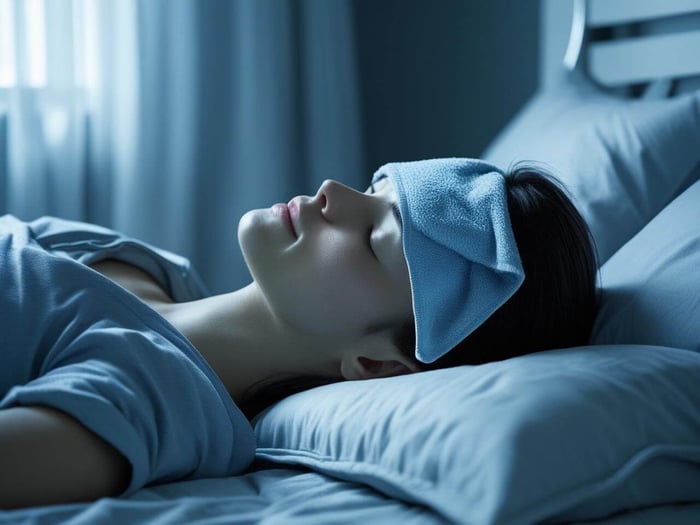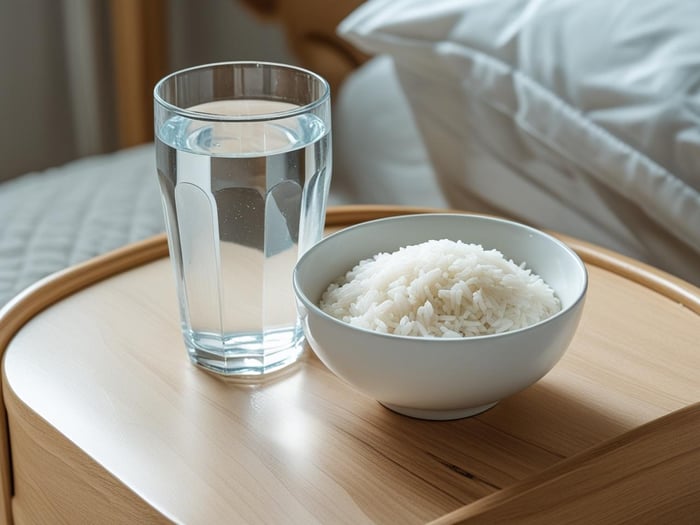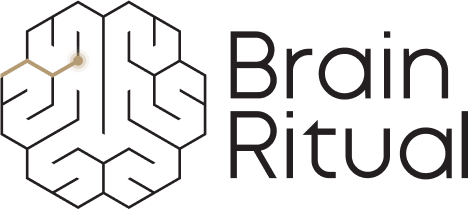Table of Contents
At a Glance
|
When a Migraine Hits at Home
You’re having a great day, but then those dreaded signs appear. That tight pressure, the rising throb, the urge to find somewhere dark and quiet. Getting a migraine at home can be frustrating, especially if you have plans or tasks you need to take care of. But the upside is that you’re in your own space, which gives you room to respond in a way that feels right for you.
Whether you're trying to avoid medication or it simply isn’t helping much, there are things you can do at home that may ease the intensity, settle your system, and provide support while it passes. What helps most will be different for everyone, but taking calm, intentional steps early can sometimes keep things from escalating.
What to Do When a Migraine Strikes at Home
If you're wondering how to get rid of a migraine at home without relying on medication, there are a few simple steps you can try that may help reduce the intensity and support your body as the symptoms unfold. Start with whatever feels most manageable.
Find a Dark, Quiet Space
One of the first things many people need to do during a migraine is to get away from bright lights, noise, and any kind of sensory overload. If you can, head to a quiet room, draw the curtains, and switch off any screens. Even a soft lamp or using your phone screen on low brightness can feel harsh when your brain is already under stress.
If total silence makes you feel uneasy, try using gentle background noise, like a white noise app or soft rain sounds. The goal isn’t to create a perfect spiritual retreat, but simply a space that feels calm and safe, so your body has a better chance to settle.

Cool Your Head and Neck
Cold therapy can be surprisingly helpful when a migraine sets in. Try placing a cold compress, a soft ice pack, or even a damp cloth on your forehead, temples, or the back of your neck. The cooling sensation may help dull the pain and reduce inflammation by narrowing the blood vessels in those areas, which can ease pressure and calm nerve activity around the head.
You don’t need anything fancy. A bag of frozen peas wrapped in a towel or a cool washcloth from the fridge can work in a pinch, just make sure there’s a layer between the cold surface and your skin to avoid irritation or cold burns. If you get migraines regularly, it may be worth investing in a ready-made gel ice pack designed for head or neck use. These tend to be more comfortable and stay in place more easily.
Use the cold pack for a few minutes at a time, then take a break. If it helps, even a little, you can return to it after 10 to 15 minutes, depending on how your skin and head are feeling.
Hydrate Gently
Dehydration can make a migraine feel worse, especially if you're also feeling nauseous or overheated. Drinking water slowly can help your body rehydrate without making you feel unsettled.
If plain water doesn’t sit well, it might be due to nausea or increased sensitivity to taste or temperature during a migraine. Try small sips of an electrolyte drink, coconut water, or a mild herbal tea instead. You might find that drinks taken at room temperature or slightly warm go down more easily than very cold ones, especially when your head is already sensitive to changes in temperature.

Avoid anything too sugary or caffeinated unless you know that caffeine tends to help your migraines. A small pinch of salt can also support hydration, especially if you’ve been sweating or haven't eaten much, as it helps replace lost electrolytes.
Good hydration isn’t about drinking a lot all at once. It’s about gently giving your body what it needs to support recovery.
Eat Something Light
When your head is pounding and you don’t feel like eating, even a small snack can feel like too much. That’s completely normal during a migraine, but skipping food altogether can sometimes make things harder to manage. For some people, low blood sugar can worsen migraine symptoms or slow recovery. A small, easy-to-digest meal can help steady your energy and give your body a little extra support.
Try eating simple, gentle foods like plain rice, bananas, soft-boiled eggs, or a small bowl of broth-based soup. These can provide light nourishment without placing extra demands on your system. Avoid eating anything rich, spicy, aged, or overly sweet, as these might be harder to tolerate during a migraine. If you're unsure what to eat, take a look at our ‘Foods that help with migraines’ guide and our ‘migraine foods to avoid list’.
Remember, there’s no need to force yourself to eat a full meal. Just aim to get something light into your system to help stabilize blood sugar levels, especially if you haven’t eaten recently.
Rest or Gentle Movement: Go with What Works for You
Some people find that lying down in a quiet, dark room is the only thing they can manage during a migraine. Others may feel restless, and find that light movement, such as walking slowly around the house or doing gentle stretches, can actually help them feel a little better. There’s no single right answer. The key is to listen to your body and respond in a way that feels supportive.

If you choose to rest, try supporting your neck and head with comfortable pillows, and keep the room cool and still. If you feel better moving around, go slowly and ideally stay in a low light environment. Either way, the goal is to reduce strain and give your nervous system space to settle.
Soothe Your Senses
During a migraine, your senses can feel unusually heightened. Light, sound, smells, and even textures might become overwhelming. Finding small ways to calm sensory input can help your system feel more at ease.
You might try a lavender eye pillow, a cooling gel mask, or soft background sounds like rainfall or white noise. If you’re sensitive to scents, skip the essential oils that help you relax on a good day and opt for scent-free comfort instead. Breathing exercises or quiet visual focus, like watching slow-moving clouds or soft shadows on the wall, can also offer a sense of calm.
Some people also find relief from gentle acupressure, massage, or sipping ginger tea to help ease tension or nausea. These small additions might not work for everyone, but they can be worth exploring if they feel soothing to you.
This is not about deep meditation or doing everything “right.” It’s simply about giving your body gentle cues that let it know it’s safe to slow down.
Don’t Push Through It
It can be tempting to keep going when a migraine hits, especially if you're in the middle of something or feel like you’re falling behind. But pushing yourself too much often makes symptoms worse or drags the migraine out longer. Taking it easy for a little while may actually help you bounce back sooner, and be more productive overall.
If you need to lie down, do so. If a task can wait, leave it. Let the people around you know what’s going on if you feel comfortable doing so. You’re not being lazy or dramatic. Your body is asking for a break, and it’s fine to listen.
Keep Track of Patterns for Next Time
It’s not always easy to spot a pattern in the moment, but tracking your migraines can help over time, especially when you’re managing them at home. Keeping a simple log of when symptoms start, what you were doing beforehand, what you ate, and what helped or didn’t can make it easier to notice trends in your environment or routine.
You don’t need a fancy app or a color-coded spreadsheet. Even a few quick notes on your phone or in a notebook can prove beneficial. Over time, this kind of self-awareness can help you feel more prepared and may make it easier to manage future migraines more confidently at home.
Long-Term Support Options
Getting through a migraine at home is often about small, simple steps in the moment, but the bigger picture matters too. Building habits over time that support your brain and body between attacks may help reduce how often migraines occur or how intense they feel when they do.
Long-term strategies might include improving your sleep routine, staying well hydrated, keeping blood sugar levels steady, and making mindful changes to your diet. For some people, targeted nutritional support may also prove an important part of their routine.
If you're looking to reduce your migraine risk more holistically, especially in response to known triggers, nutrition may offer extra support. For a more structured approach, Brain Ritual® is a medical food designed for the dietary management of migraine. It includes science-backed ingredients like magnesium, riboflavin, and CoQ10 along with D-Beta-Hydroxybutyrate, a brain-friendly ketone source that supports clean energy and metabolic stability. The formula also contains nutrients like vitamin B12 and L-carnitine to help nourish your nervous system and support consistent energy levels, all available in a once-daily routine that’s easy to stick with.
Brain Ritual® is a medical food for the dietary management of migraine and is not intended to diagnose, treat, cure, or prevent any disease. This content is for informational and educational purposes only and is not intended as medical advice.
Common Questions About How to Get Rid of a Migraine at Home
How can I get rid of a migraine fast at home?
There’s no guaranteed way to get rid of a migraine fast, but acting early can make a big difference. Many people find that lying down in a dark, quiet room, applying a cold compress, sipping water or electrolytes, and eating something light may help relieve a migraine quickly. These steps won’t work for everyone, but they can often ease the intensity and help you feel more in control sooner.
What About Medication?
Many people reach for over-the-counter medications like ibuprofen or acetaminophen when a migraine hits. If these options work for you and are part of your plan, they can be taken at home as directed. But if you’re looking to avoid medication, or are finding that it hasn’t helped much, then following the calming, practical steps mentioned throughout this article may help support your body through a migraine more naturally.
What should I avoid doing during a migraine?
Try not to push through activities, stay in bright light, or ignore early warning signs during a migraine. Overexertion, dehydration, loud environments, and skipping meals can all make symptoms worse. If something feels like it’s too much, it probably is.
Final Thoughts
Getting rid of a migraine at home isn’t always easy, but small, steady steps can help make a meaningful difference. Whether it’s lying down in a dark room, staying hydrated, or simply giving yourself a chance to rest, taking action early can often ease the intensity and give you more control over the experience.
Over time, building supportive habits such as tracking your symptoms, adjusting your diet, or adding targeted nutritional support may help reduce how often migraines occur and how strongly they affect your day (also see Harvard’s guide to coping with migraines). A daily option like Brain Ritual® can be an easy way to give your brain ongoing nutritional support from the comfort of home.
Everyone’s experience with migraine is different, but being prepared and learning what works best for you can go a long way toward helping you feel more at ease, especially when you're managing symptoms at home.




